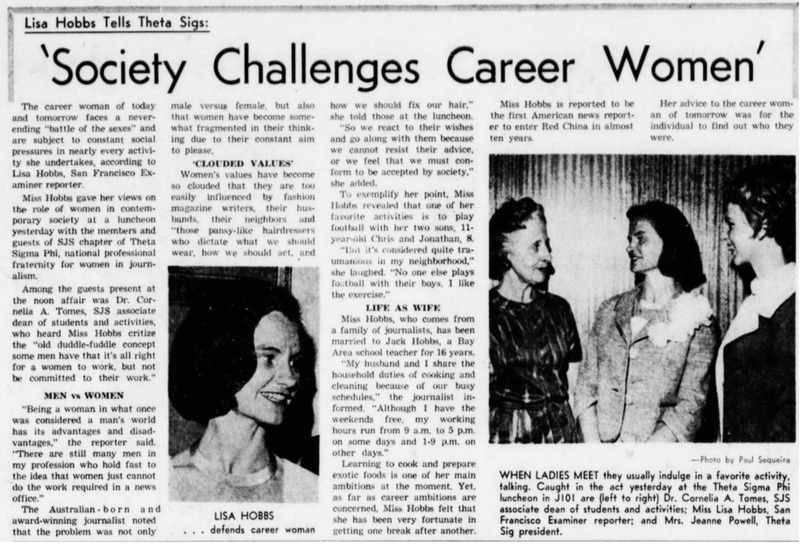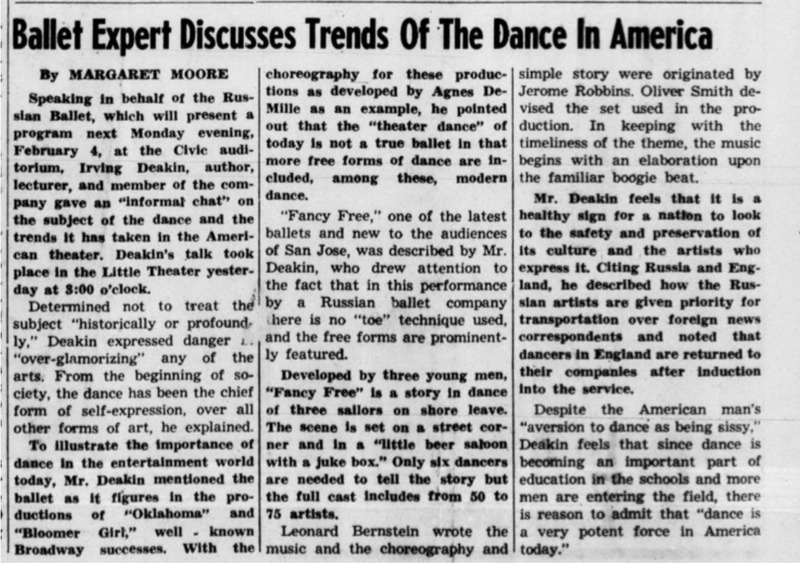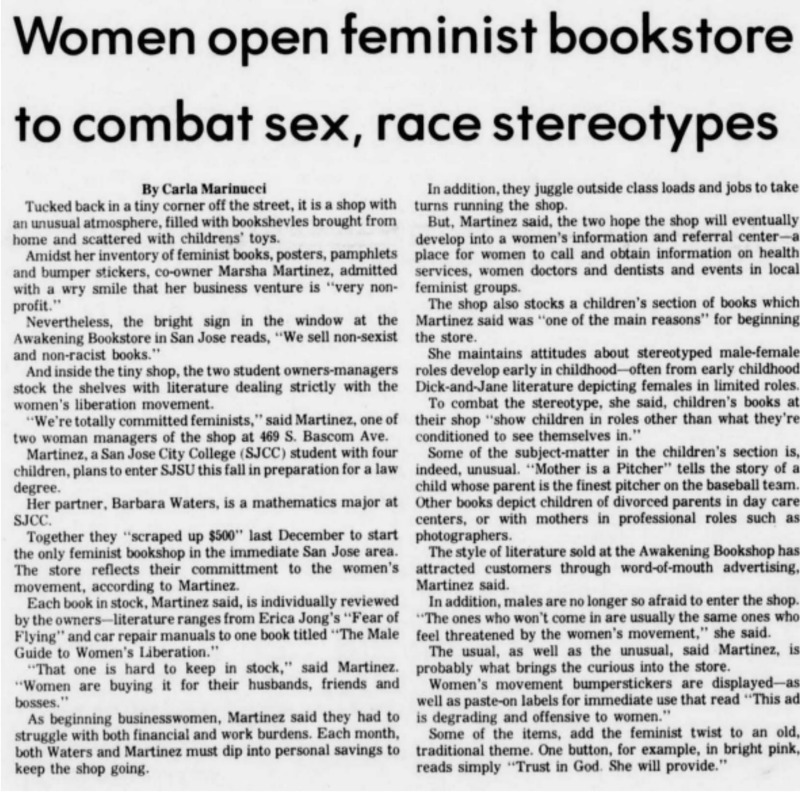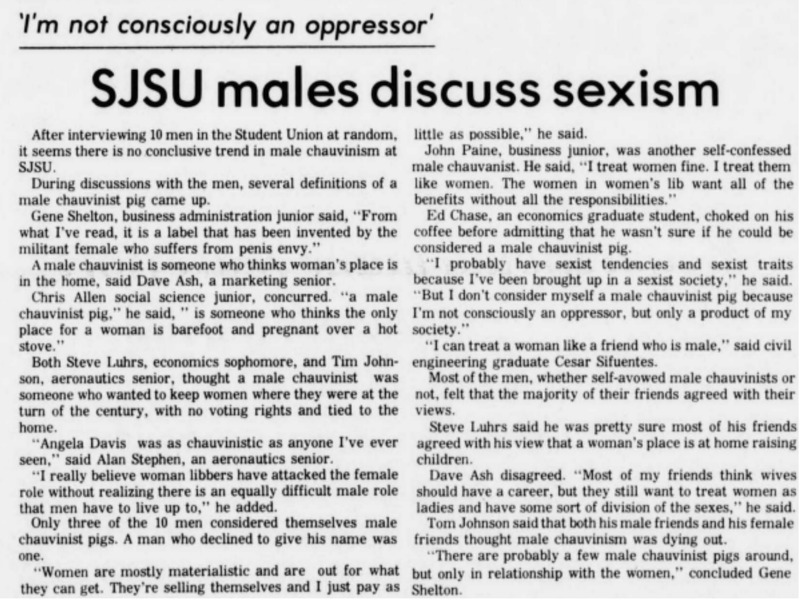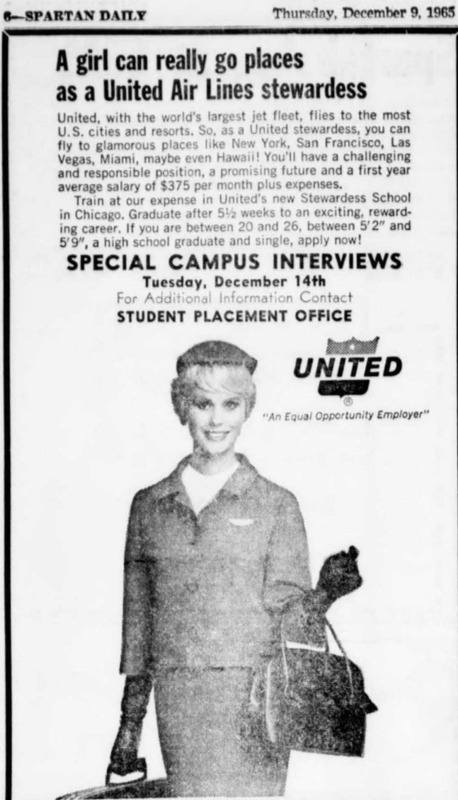Challenging Gender Stereotypes
This page shows archives and interviews collected from both subjects Violence Against Women and Lindy Hop, showing the intersecting connections towards the topic of 'Challenging Gender Stereotypes'.
Note: The asterik (*) shown in the description text for certain pieces of media means there is more than one page.
From Lindy Hop interview with Megan and Ian
5. Race & Gender Context in the Bay Area
Megan: What changes have you seen around race and gender?
Ian: The Bay Area Lindy community is very socially conscious. For example, at Camp Hollywood there was a two‑day workshop led by a queer instructor who avoided “leader/follower” labels—he used “rocking on left foot” vs. “rocking on right foot” to neutralize gender roles in the dance. It was revolutionary for our scene.
6. Switch Dancing & Role‑Swapping
Megan: Do people still switch roles?
Ian: Yes—switching is normalized. It’s commonplace for anyone to lead or follow, regardless of gender. That inclusivity is core to our Bay Area identity, even if other regions might view a man following as unusual.
From Lindy Hop interview with Megan and Bud
2. Lindy Hop as a Liberating Activity
Megan: Have you seen Lindy Hop culture used as a liberating activity here?
Bud: Definitely. It broke away from uptight social rules—women could dance wild, un‑ladylike, even be thrown. Beauty standards went out the window
Analysis of 'Challenging Gender Stereotypes'
Typical Stereotypes of Men & Women (Public Perception)
These Spartan Daily clippings from 1945, 1965, and 2001 reveal how women were consistently viewed through traditional gender roles. In 1945, women were expected to be social supporters, as one article noted “only 40 girls were on hand to entertain the boys,” while “men flock from all over the bay area to the Thursday dance.” That same year, women’s involvement in dance was tied to preserving culture, with one writer stating that it’s “a healthy sign for a nation to look to the safety and preservation of its culture.” In 1965, a recruitment ad called for women aged 20 to 26, “between 5’2” and 5’9”, a high school graduate and single,” showing how women were selected based on looks and availability. By 2001, a fertility center ad read, “Women, be an Angel… Donate Eggs!” targeting those who were “healthy, bright and responsible.” These examples show how women were often valued for their ability to serve others—emotionally, physically, or biologically.
Neutralizing Gender Roles
Ian’s interview question #5 further illustrates how the Lindy Hop community in the Bay Area has actively worked to neutralize gender roles in dance. The use of non-gendered terms like “rocking on left foot” versus “rocking on right foot” instead of “leader/follower” was seen as “revolutionary” for their scene. This effort mirrors the feminist movements in the 1970s and beyond, where there was a concerted push to break free from rigid, traditional gender expectations. Over time, these shifts have reflected a growing desire to neutralize gender roles, from the overt limitations seen in the earlier years to more inclusive, progressive changes in later decades. The progression in both the dance community and the broader societal context shows a movement towards equality, where women are no longer confined to traditional roles but are encouraged to engage in a variety of roles, both socially and professionally.
Challenging Gender Roles
The Spartan Daily article ‘Society Challenges Career Women’ and our interviews highlight the evolving challenge to gender roles over time, particularly through dance and societal shifts. In 1965, women were often portrayed through restrictive stereotypes, with ads emphasizing physical appearance and marital status. This reflects broader media influences that shaped how women were expected to behave and look. Though by the time of our interview, Lindy Hop had become a liberating space where traditional gender roles were actively challenged. Ian in question #6 describes how switching roles in Lindy Hop, where anyone can lead or follow regardless of gender, has become a normalized part of the Bay Area dance scene. Bud in question #2 further emphasizes that Lindy Hop allowed women to break away from "uptight social rules," dancing in ways that were once considered un-ladylike. This shift represents a broader cultural move towards inclusivity, where both men and women are free to express themselves without being confined to traditional gender expectations.



